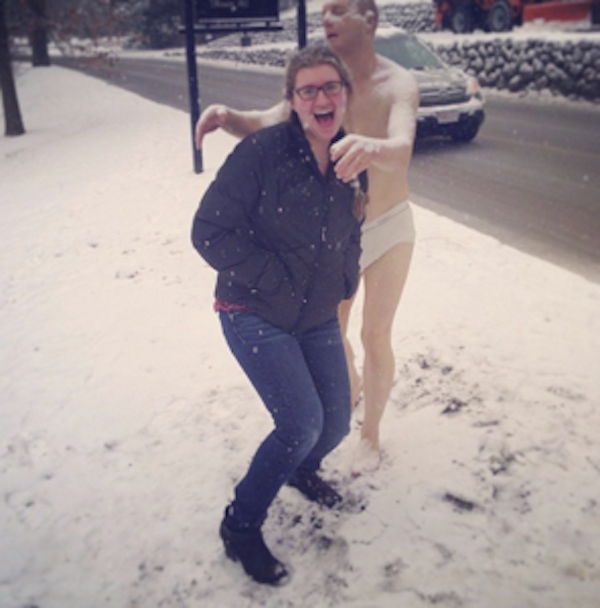
You’ve probably heard of the furor over a statue of a nearly-nude sleepwalker at Wellesley College, by now it’s been written up locally, nationally, and internationally. Long story short: eerily realistic statue on campus creeps some people out, some can live with it for the sake of art, others demand that it be relocated for the sake of their mental health. Of course, it is entirely up to the students, faculty, and leadership of Wellesley to decide for themselves what sort of art they are willing to tolerate on campus. They will have to balance the value of the artwork itself (along with the value of promoting untrammeled free expression with respect to works of art in general) against their various competing values. On the other side of the ledger, the most popular argument seems to be that the statue violates the spirit of the “safe space” that Wellesley is supposed to be, a place where women have nothing to fear. Here are a few representative examples:
Within just a few hours of its outdoor installation, the highly lifelike sculpture by Tony Matelli, entitled “Sleepwalker,” has become a source of apprehension, fear, and triggering thoughts regarding sexual assault for some members of our campus community.
Wellesley should be a safe place for their students not a triggering one.
Students are clearly unhappy with this installation. They find the statue creepy and unsettling and don’t relish the thought of having to walk past it each day – some students are even going so far as to plan alternate routes to “get out of the statue’s way.” (dir. quote) But, many students are already forcing themselves to “get used to it” (dir. quote) and to accept it as a situation that they do not have control over and are powerless to. This is an emotion that is all too familiar in the real world for many people, and I am shocked that this kind of scenario is being willfully replicated right on Wellesley’s campus. Our safe space – the only safe space for some of us – is being heavily compromised, and the fact that you are choosing to defend the statue before considering students’ comfort-levels is a shame.
It’s not remotely obvious to me what people might find triggering about the harmless act of somnambulism, so we must assume that it is the unadorned male form itself which instills fear of sexual assault, without any regard for whether the statue was intended to be about sex in any way, shape, or form. To those who advocate carving out safe spaces, the subjective feelings of the viewer will trump all other considerations so long as that person can claim membership in a designated oppressed group.

Which brings us to the part where this controversy becomes relevant to the freethought community. As a thought experiment, imagine what would happen if sculptor Tony Matelli hoped to become one of the vendors at the American Atheists 2014 convention. As soon as he pulled out a visual representation of his artistic vitae, he would be found in violation of their code of conduct, which strictly prohibits “sexual images in public spaces” which are “not related to convention sessions or materials.” American Atheists’ policy is intended to carve out a safe space wherein people will not be exposed to anything that might be construed as a sexual image, and as we have seen, feminist activists are willing to sexualize and demonize even the most innocuous and vulnerable representations of the male form, should they find the images subjectively unpleasant.
Of course, safe spaces are not limited to protection from potentially triggering images that may be construed (by some) as objectionable expressions of human sexuality. According to the Geek Feminism wiki, a safe space may be one “in which a shared political or social viewpoint is required to participate in the space” and which “would not allow free expression of anti-feminist viewpoints.” If that is the sort of safe space one is hoping to construct, then we may expect that any skeptical critique or critical analysis of sacrosanct feminist concepts will be off the table.
Where do we as skeptics draw the line? If feminism really does require spaces wherein expressions of sexuality are censored, where feminist theories are shielded from skeptical inquiry, where a diversity of different viewpoints are unwelcome, how can feminism and skepticism ever hope to coexist? Will we at some point come to an understanding over what forms of artistic expression and skeptical inquiry are permissible, or will skeptics and feminists have to agree to go our separate ways? If we don’t address these questions with our eyes open, skeptics are at risk of sleepwalking into feminist safe spaces where the rules are set by those who prioritize personal comfort over free expression and free inquiry.
